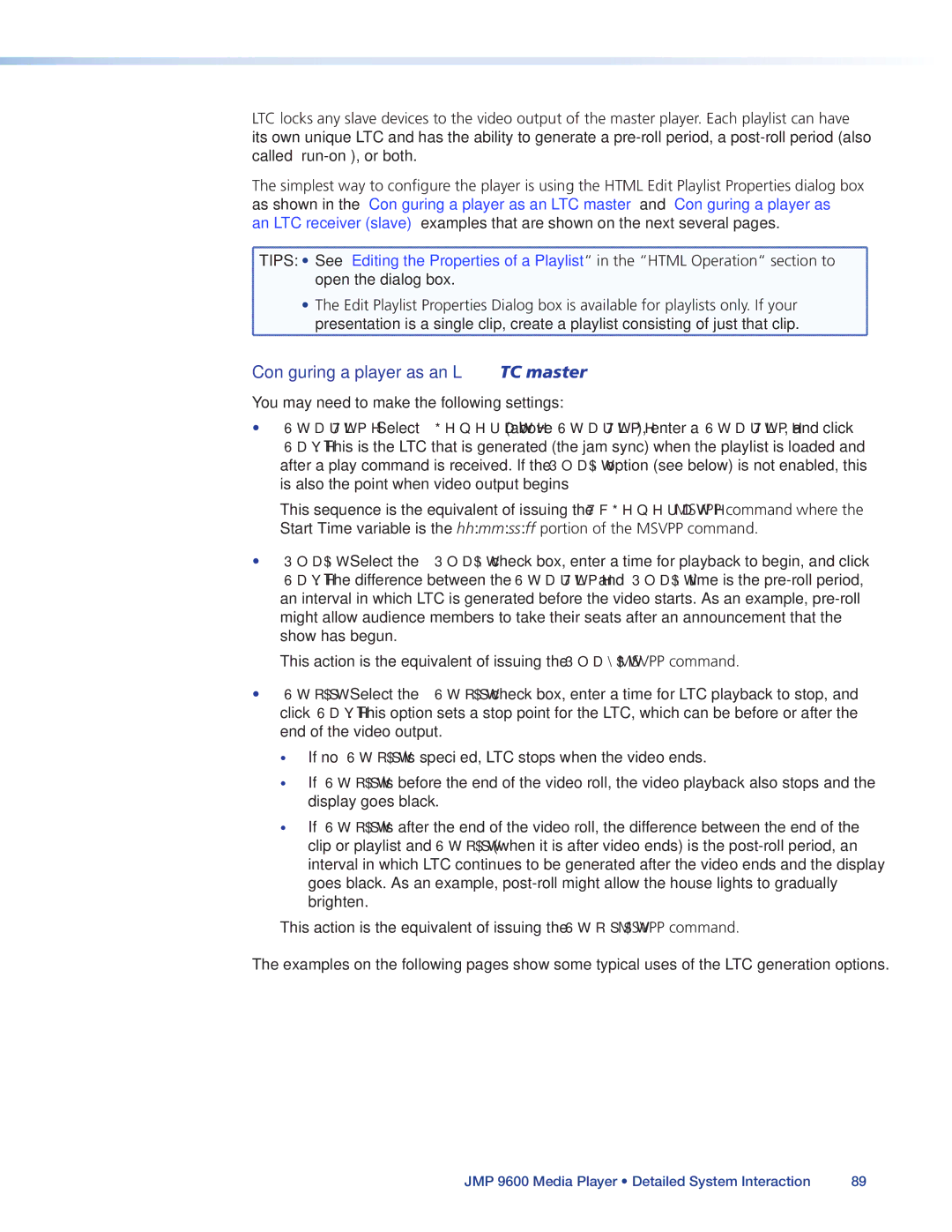
LTC locks any slave devices to the video output of the master player. Each playlist can have its own unique LTC and has the ability to generate a
The simplest way to configure the player is using the HTML Edit Playlist Properties dialog box as shown in the “Configuring a player as an LTC master“ and “Configuring a player as an LTC receiver (slave)“ examples that are shown on the next several pages.
![]() TIPS: • See “Editing the Properties of a Playlist“ in the “HTML Operation“ section to
TIPS: • See “Editing the Properties of a Playlist“ in the “HTML Operation“ section to
open the dialog box.
• The Edit Playlist Properties Dialog box is available for playlists only. If your presentation is a single clip, create a playlist consisting of just that clip.
Configuring a player as an LTC master
You may need to make the following settings:
•Start Time — Select Generate (above Start Time), enter a Start Time, and click
Save. This is the LTC that is generated (the jam sync) when the playlist is loaded and after a play command is received. If the Play At option (see below) is not enabled, this is also the point when video output begins
This sequence is the equivalent of issuing the TcGenerate MSVPP command where the Start Time variable is the hh:mm:ss:ff portion of the MSVPP command.
•Play At — Select the Play At check box, enter a time for playback to begin, and click Save. The difference between the Start Time and Play At time is the
This action is the equivalent of issuing the PlayAt MSVPP command.
•Stop At — Select the Stop At check box, enter a time for LTC playback to stop, and click Save. This option sets a stop point for the LTC, which can be before or after the end of the video output.
•If no Stop At is specified, LTC stops when the video ends.
•If Stop At is before the end of the video roll, the video playback also stops and the display goes black.
•If Stop At is after the end of the video roll, the difference between the end of the clip or playlist and Stop At (when it is after video ends) is the
This action is the equivalent of issuing the StopAt MSVPP command.
The examples on the following pages show some typical uses of the LTC generation options.
JMP 9600 Media Player • Detailed System Interaction | 89 |
